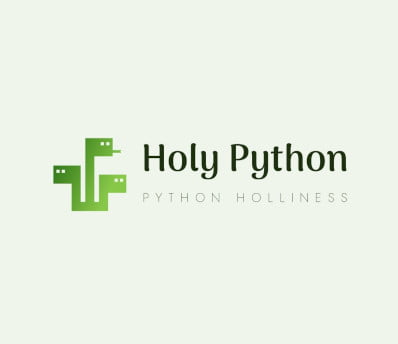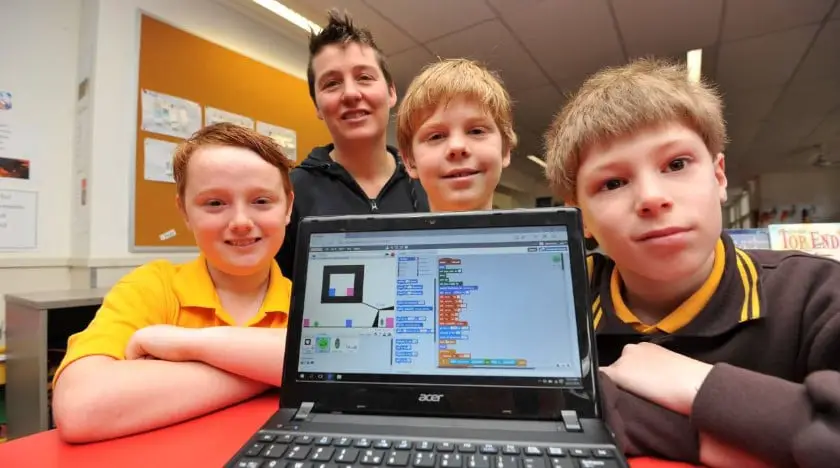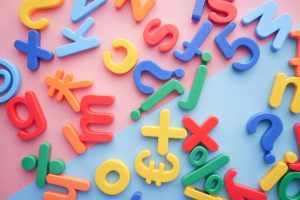In this article we will try to argue why learning Python makes so much sense during Covid19 pandemic, how to learn Python and if you already know Python you can skip to the bottom to see some interesting Python projects going on related to the Coronavirus.
Rather than a very quick tutorial, this article will aim to elaborate solid strategies for learning Python that can be customized for people from all walks of life.
Make the most out of Quarantine times with learning Python programming language
Are you bored or out of your mind during self-mandated confinement, feeling foggy, anxious, and hopeless due to the current health crisis? You’re not alone, lots of people are uncomfortable with increased worries, anxiety, a longing for open air and outdoors as well as loved ones.
Although computer programming can’t replace things like exercise, nature or relationship with loved ones, it can stimulate your intellectual mind and empower you like no other. So, stop worrying and take your destiny in your own hands; you can acquire wealth and prosperity with Python. Homo Sapiens survived way worse hardship and difficult periods in history and we’ll get through Covid19 as well.
Python is widely used in large organizations due to its multiple programming models. Software developers prefer Python because of its amazing features and applications in software development companies, such as frameworks, web applications, gaming, language development, models and graphic design applications, etc. Python is also matchless when it comes to Machine Learning and AI.
This is the era of Artificial Intelligence and Machine learning is based on well-written and improved languages for heavy tasks. Python provides high-level abstractions that allow you to treat everything as an object. You do not have to worry about memory management and CUDA programming privileges.
Scroll down to read this article about learning Python (especially for beginners) and some very interesting projects that are going on regarding the recent pandemic.
Estimated Time
15 mins
Clickable Content
Mentioned Domains
Website development Web applications Computer vision Data science Finance Economics Renewable Energy Science and Research Robotics Autonomous driving Game development Art Space Technology Education Data Visualization Web Scraping E-commerce Sports and Athletics Genetics Evolution studies
Article Provided by
HolyPython.com

How to learn Python?
Strategies to learn Python can differ depending on the person who is doing the learning. Let’s look at how it may differ in background categories:
Based on coding level
Are you considering those “teach you Python in 1 day” schemes that pop up here and there? Well maybe think again. For a new coder there are lots of concepts to digest and master. So, don’t overwhelm yourself, give yourself time you need to come up with meaningful sustainable results whether it’s 1 week or 1 month or 1 year. What’s important is to stay persistent and motivated and be your own mentor and judge.
Absolute beginner: This is a populated group of people when it comes to learning Python probably because Python is the first choice of many people who are learning coding for the first time due to its intuitive no non-sense syntax
In this case it can be easy to get overwhelmed so just knowing where you stand might be super helpful for the long-term progress.
- You will be learning lots of programming jargon, logic, terminology, programming history
- you will also be exposed to lots of syntax specific lingo such as:
- methods,
- parameters,
- instances,
- classes,
- functions,
- objects,
- arguments,
- attributes,
- libraries,
- modules, packages
- keywords etc.
(Some of these terms can be used interchangeably which can be quite confusing for a beginner. So, doing some glossary reading and a little bit of online research can help you avoid so much confusion and help you focus on what really matters.)
- coding software
- IDEs,
- Notebooks,
- Text Editors,
- Frameworks
- Libraries
- Distribution Platforms (like Anaconda)
- Python Package Installers (like pip)
- Consoles etc.
- how to think like a programmer,
- algorithms
- recursion
- problem solving skills
- understanding errors,
- debugging skills,
- difference between languages (high level, low level, interpreted etc.)
- possibly basic math (algebra)
- Python operators
- and more
Based on age

Depending on the age levels there are different approaches to learning programming and specifically Python. Basically some of the likely age brackets (with some overlap) will be:
- Pre-schoolers
- Elementary and middle schoolers (equivalent of primary and secondary in Europe)
- Teens
- Young adults & college students
- Experienced professionals, researchers entrepreneurs, business developers, business owners, tech people, IT people etc.
- Senior citizens.
As the interest in programming surges, there are more and more seniors who’d like to learn and practice this amazing concept. Especially Python allowed people to step in a very welcoming and convenient way, we can say it almost enabled global coding literacy and you gotta love Python at least for that. But so, a senior citizen might have more experience and resources in some ways and less experience and resources in others which can be optimized when a programming concept is being learned.
There are lots of different programming services to teach young children coding and their numbers and quality are growing everyday. Also an older adult might have domain specific (finance, logistics, data science, medical, banking, trading etc.) expectations from Python programming language while a younger adult might be exploring the technology with a higher appetite for discovering different options and techniques.
Of course it could also be the other way around but this just shows the possibility of the need for different Python learning approaches.

Based on expertise and/or aspirations
Whether you’re a computer vision enthusiast, and option trader, a hobbyist analyzing ancient scripts or someone who’s developing an international e-commerce business, your approach to Python can be different. You will probably want the same basic syntax, structures and functions no matter what you do. But, immediately after that stage you will want to focus on specific Python skills whether it’s specific internal or external libraries, math skills, visualization skills, other supplementary programs or other languages (i.e: SQL, Javascript, TensorFlow, Keras, React, Seaborn, Tableau, )
- Website development
- Web applications
- Computer vision
- Data science
- Finance
- Economics
- Renewable Energy
- Trading
- Banking
- Science
- Research
- Robotics
- Autonomous driving
- Game development
- Art
- Cancer Research
- Space Travel and Technology
- Education
- Data Visualization
- Web Scraping
- Operating Systems
- Business Development
- E-commerce
- Sports and Athletics
- Genetics
- Evolution studies
Why Learn Python?
If you are wondering why to learn python here are five good reasons to learn and practice python online.
- Portability
Python can open so many doors. You can run the same code on any device, and this makes Python a portable language. Suppose you have written the Python code for Windows. Now, if you want to run it on Mac, you don’t need to modify it. However, all system-dependent functionality should be avoided in this case.
- Large standard library
Python is a versatile, high-level, dynamic and interpreted programming language that focuses on the readability of code. Python is downloaded with a large standard library that you can use, so you don’t have to type your code every time. There are standard libraries for web browsers, regular expressions, databases, threading, CGI, image manipulation, email, and many other functions.
- Productivity
Python is intellectually highly satisfying, and coding is good for brain activity. With robust process integration features, a unit testing framework, and improved control capabilities, it helps increase the speed of most applications and application productivity. It is an excellent option for creating scalable multi-protocol network applications.
- Ease of learning
Learning Python online is more convenient than ever. Python offers easy-to-learn syntax that helps the beginners use this programming language. The guidelines provide a set of rules to facilitate code formatting. Also, a large base of active users and developers has led to a good Internet resource bank to boost the continued development and adoption of the language.
- Demanding skill
Perhaps the best thing about Python is its seemingly unlimited applicability. There is a big shortage of Python coders and Machine Learning engineers making python a demanding skill. Turn difficult times to a positive and transform your crisis to beneficial future outcomes.
Make the most out of quarantine times with learning python programming languages. You do not have to worry about how to learn Python as you can find many good python tutorials online. Remember that practicing with Python exercises is one of the best ways to learn Python
Bonus reason: Fantastic Community
So, what does fantastic community mean for the user? It means lots of healthy discussion, many enthusiasts at your service when you might have a question, abundance of amazing people and projects to follow and be inspired of, great support in every aspect, sustained growth of user base and something you can really feel when you decide to create tools, programs or scripts with your code that will be actually used in a functional way: mind blowing selection of external libraries to choose from and work with.
Python Covid19 related Projects
1. This is rather a fashion type development but it’s related to tech. Someone invented masks with partial customized faces on it. This also allows you to continue unlocking your Apple or Android mobile phone if it has face unlock or facial recognition function.
Here is a news article on Danielle Baskin’s Resting Risk Face initiative.

2. Another interesting news was when France started using mask recognition software to analyze the usage of face masks in Paris subway stations.
You can read about this interesting tech implementation by France government here.

3. Then the problem was that software couldn’t analyze people with masks on. Given the increasingly widespread use of face recognition technology in public places as well as personal gadgets this is a new problem as the whole world adapts to wearing face masks during Covid19 pandemic.
This Chinese company developed an algorithm claiming to identify people with masks on with 95% accuracy. Not a bad start!

4. Covid Patient Diagnostic based on CT scan and X-ray analysis with Python and deep learning tools.
Check out Andrew Ng’s tweet about the progress regarding how pneumonia was accurately diagnosed by Machine Learning as explained in this Stanford paper.
Although deep learning focuses on X-ray data currently due to availability as well as computation resources and memory restrictions, it is almost guaranteed to evolve to CT Scan analysis as hardware tech becomes stronger in the upcoming years.

Should radiologists be worried about their jobs? Breaking news: We can now diagnose pneumonia from chest X-rays better than radiologists. https://t.co/CjqbzSqwTx
— Andrew Ng (@AndrewYNg) November 15, 2017
4. You can also develop your own epidemic model in Python to forecast the spread. This is usually done by following a model named SIR that dates back to 1927 based on Kermack and McKendrick’s work. You are more familiar with SIR than you probably know if you follow the reports about Covid. The name comes from S(susceptible), I(infected) and R(recovered).
Here is a very interesting paper on this subject. Unfortunately it’s not free.

Conclusion
Covid19 or not, learning Python has never made more sense than now. With the magnitude of community support, freely available material and extraordinarily interesting projects humanity is advancing. Hopefully we can build beautiful solutions and tools with this tech that empower people all over the world.





